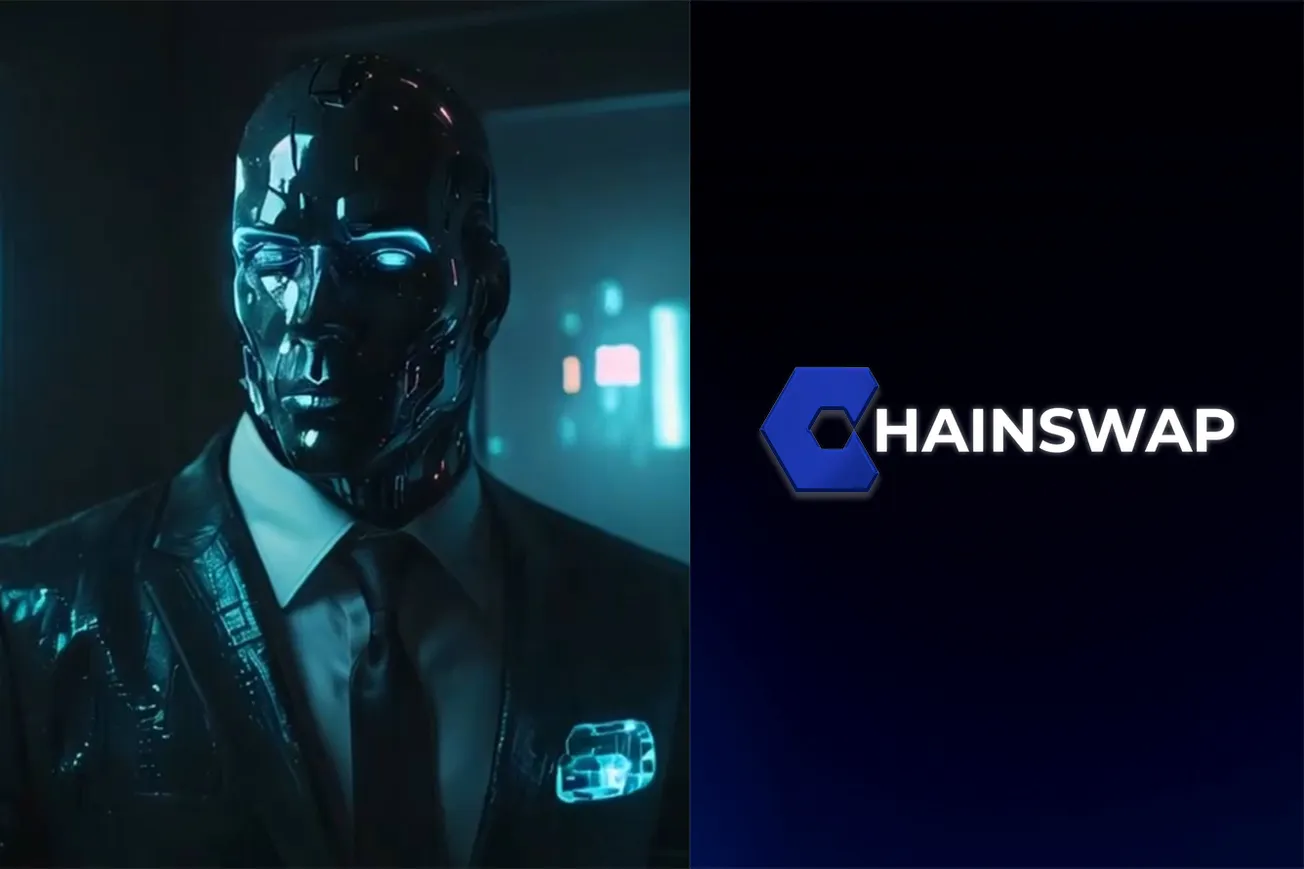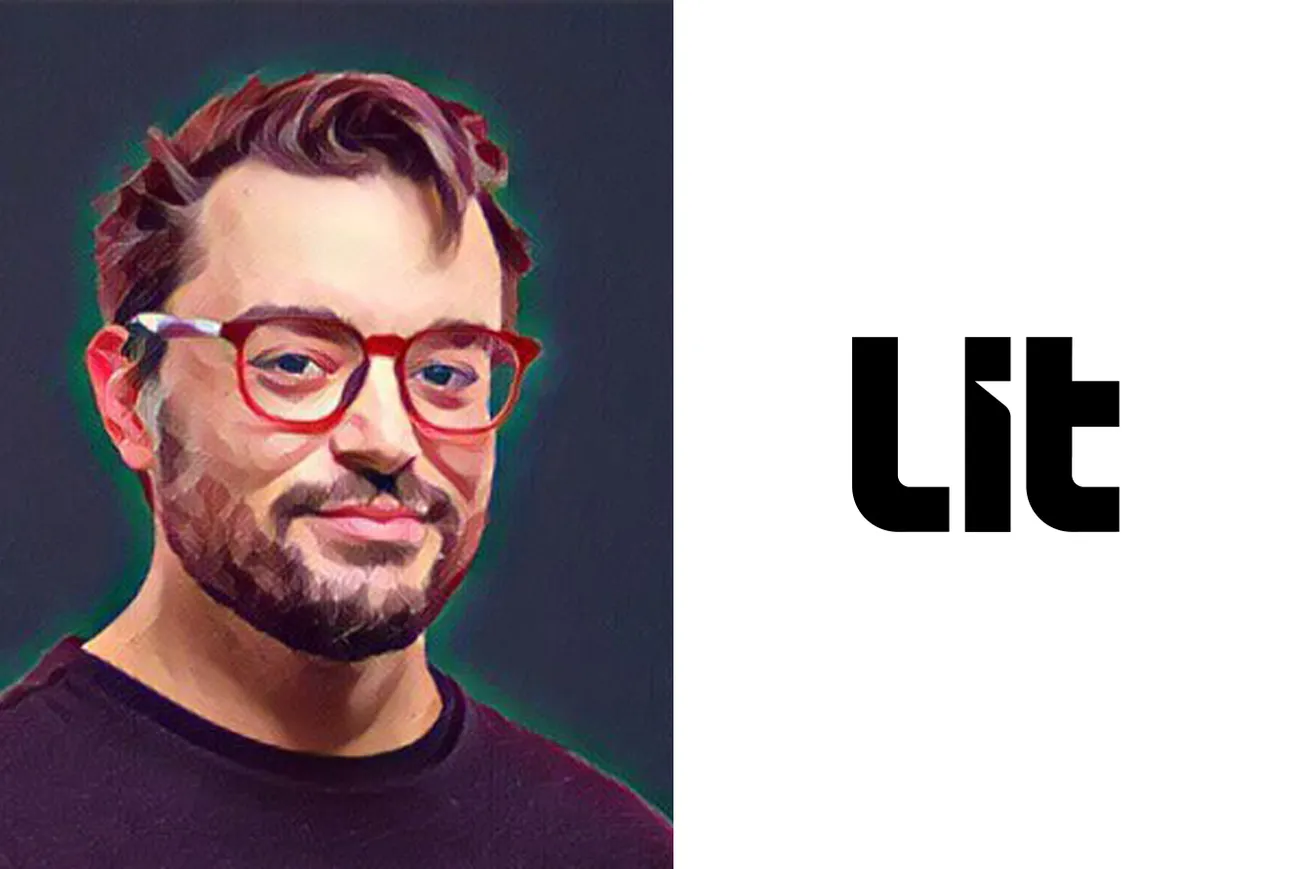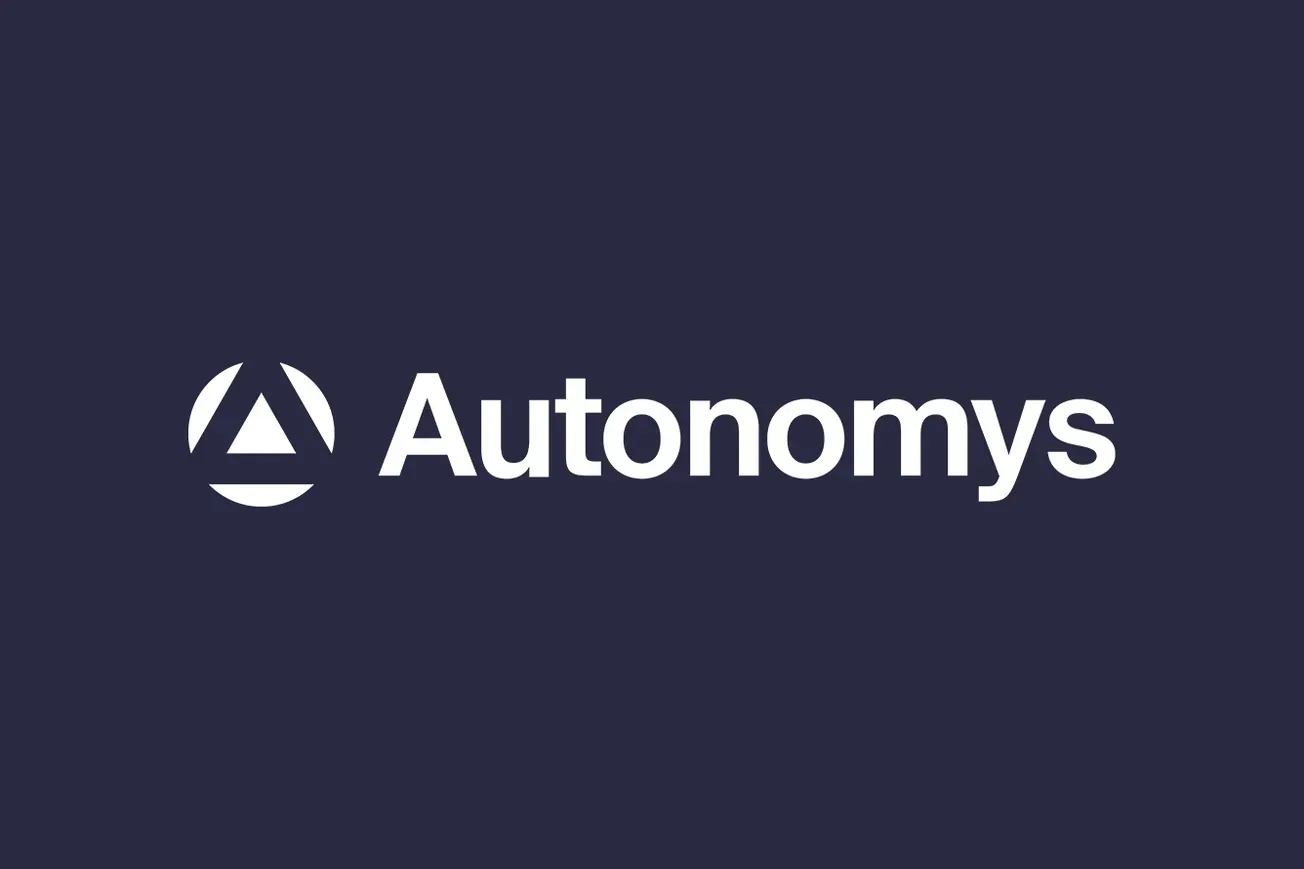Table of Contents
At The Founder, we love exploring the minds behind groundbreaking innovations in the tech space. Today, we are excited to welcome Felix Xu, the co-founder and CEO of ARPA Network and Bella Protocol.
ARPA Network is pioneering decentralized cryptographic solutions, leveraging BLS Threshold Signature Scheme (BLS-TSS) to enable secure, tamper-proof digital signatures and verifiable randomness. Its flagship product, Randcast, provides on-chain verifiable randomness for Web3 applications, ensuring fairness and transparency in gaming, lotteries, and decentralized applications.
As a leading Attestation Verification Service (AVS) on EigenLayer, ARPA is pushing the boundaries of restaking security, decentralized verification, and cryptographic infrastructure. Its upcoming initiatives in Verifiable AI and Zero-Knowledge Machine Learning (ZKML) will introduce provable, trust-enhancing AI models for privacy-preserving applications.
Backed by Binance Labs, Arrington Capital, and leading Web3 investors, ARPA is working to bridge cryptography and AI, advancing the future of verifiable AI. In this interview, Felix shares his journey, insights into decentralized security, and how cryptographic advancements are shaping the next era of blockchain and AI.
Can you tell us a little about your journey into the blockchain space and what inspired you to co-found ARPA Network?
I’ve always been passionate about technology and finance—probably because I grew up in an entrepreneurial family. I was trading stocks as a teenager, using my grandpa’s account during China’s biggest bull market. Later, I studied Finance and Information Systems at NYU Stern, which gave me a strong foundation in both traditional finance and emerging technologies.
My first encounter with Bitcoin was in 2012, when my professor at NYU gave out BTC to students as part of an experiment. At the time, I had no idea what it really meant (and I’ve since lost that wallet), but the idea of owning a digital asset without relying on a central authority stuck with me. Fast forward a few years—while working in venture capital in Beijing, I started researching blockchain seriously. I invested in Bitcoin and Ethereum in 2017, but beyond the price action, what really fascinated me was the technology’s potential to redefine digital trust, security, and ownership.
In 2018, I co-founded ARPA Chain, focusing on privacy-preserving computation using Multi-Party Computation (MPC). We wanted to help businesses securely analyze sensitive data without exposing it—kind of like doing joint computations on encrypted information. We partnered with JD.com to test our MPC prototype and contributed to industry standards alongside IEEE, Alibaba, and Ant Finance. But back then, MPC was still ahead of its time—businesses found it complex, and performance limitations made adoption difficult.
That’s when we started exploring Threshold Signature Schemes (TSS) as a more scalable and practical cryptographic solution for blockchain security. This led to our rebranding as ARPA Network in 2022, shifting our focus to BLS Threshold Signature Schemes (BLS-TSS). Our main product, Randcast, provides verifiable, on-chain randomness for Web3 gaming, lotteries, and dapps, ensuring fairness and security.
Today, ARPA is also a top EigenLayer AVS, helping secure billions in digital assets through decentralized validation and restaking security. Looking ahead, we’re expanding into Verifiable AI and Zero-Knowledge Machine Learning (ZKML)—exploring how cryptography can make AI models more transparent and trustworthy.
At the end of the day, my journey has always been about bridging cryptography, blockchain, and AI. The way I see it, decentralized security, verifiable computation, and AI-powered automation will play a huge role in the future—and ARPA is excited to be part of that evolution.
ARPA has seen significant growth in recent years. What has been the most rewarding part of this journey for you?
Honestly, the most rewarding part has been seeing our vision turn into reality and watching the community grow around it. When we first started ARPA, cryptographic security and verifiable computation were still niche topics in blockchain. Today, concepts like threshold signatures, verifiable randomness, and decentralized validation are becoming critical infrastructure for Web3, and knowing that we played a part in that shift is incredibly fulfilling.
I’m also really proud of how ARPA has evolved. We started with MPC-based privacy solutions, but as we explored new cryptographic primitives, we realized Threshold Signature Schemes (TSS) could be a game-changer for security and blockchain scalability. That pivot led to our rebranding as ARPA Network and the development of Randcast, which is now being used across Web3 gaming, lotteries, and decentralized applications.
On top of that, becoming a leading AVS on EigenLayer has been a huge milestone. Seeing billions in staked ETH securing our network and tens of thousands of stakers supporting ARPA reinforces the trust the community has in our vision.
But beyond the numbers and achievements, what really keeps me going is the belief that cryptography and AI can reshape the future. We’re now expanding into Verifiable AI and Zero-Knowledge Machine Learning (ZKML)—new frontiers where cryptographic proofs can make AI models more transparent and verifiable. It’s exciting to think about how these innovations will impact not just blockchain but the broader digital world.
Outside of work, what are some of your hobbies or interests that keep you inspired?
Outside of work, I try to spend as much time as possible outdoors. I love kitesurfing and sailing—there’s something about being on the water, feeling the wind, and just being fully present in the moment that helps me reset. When you’re riding the waves, you can’t think about work, crypto, or AI—you’re just in the flow. It’s a great way to clear my head and come back with fresh ideas.
I’m also a huge NFT collector and have been deep in that space for years. To me, NFTs are more than just digital assets—they’re a new form of self-expression, community, and ownership. Some people collect art or rare sneakers, I collect on-chain culture.
Beyond that, I’ve always been fascinated by markets—not just in crypto but across stocks, forex, and macro trends. I got my start in trading when I was a teenager, and that curiosity never left. Even now, I spend a lot of time analyzing market cycles, tracking narratives, and thinking about how AI and automation will change trading in the future.
ARPA focuses on decentralized threshold cryptography. For those unfamiliar with the concept, can you explain its significance in simple terms?
Imagine a bank vault, but instead of one key, the combination is split among a group of people. No single person can open it alone—only when a certain number of them work together does the vault unlock. That’s the idea behind threshold cryptography. Instead of relying on one party to sign or verify something, the power is distributed, making everything more secure and manipulation-proof.
At ARPA, we use BLS Threshold Signature Scheme (BLS-TSS) to bring this concept to blockchain. One way we do this is with Randcast, which provides verifiable randomness for games, lotteries, and NFTs—ensuring nobody can rig the results. Another use case is decentralized digital signatures, where multiple nodes work together to sign transactions securely. And as a leading AVS on EigenLayer, ARPA is also helping to fortify blockchain infrastructure, safeguarding billions in staked ETH through decentralized validation.
Threshold cryptography makes systems more resilient, more transparent, and resistant to manipulation. Whether it’s fair randomness, secure transactions, or blockchain security, this tech ensures that decisions are made collectively and cryptographically—no shortcuts, no single points of failure, just pure math doing its thing.
Randcast is your flagship product for secure random number generation. What are some real-world applications where it’s making a difference?
Randcast provides verifiable, tamper-proof randomness, which is crucial for gaming, NFTs, lotteries, and fair selection processes. In Web3 gaming, it ensures unbiased loot drops, randomized maps, and unpredictable in-game mechanics—so no one can rig the system. For NFTs and lotteries, it guarantees fair trait distribution and winner selection, preventing manipulation by developers or insiders.
Beyond that, Randcast is being explored for DAO governance, cryptographic key generation, and fair whitelisting. For example, DAOs can use it to randomly select delegates in a provable way. As blockchain expands into AI and decentralized identity, verifiable randomness will help ensure unbiased decision-making across different applications.
The blockchain industry is evolving rapidly. What are some key trends you believe will shape the future of decentralized security solutions?
The blockchain industry moves fast, but one thing that hasn’t changed is the need for strong security and trustless verification. As more value moves on-chain, the risks and attack surfaces are expanding. The way we protect assets, verify identities and secure computation needs to keep up. Here are some trends I think will be key:
Restaking & Modular Security
Instead of every project having to build its own security from scratch, we’re seeing a shift toward shared security models like EigenLayer. Restaking lets staked ETH be used to secure decentralized services, making blockchain infrastructure more efficient.
Advancements in Cryptographic Security
Beyond traditional private keys and multisigs, more advanced cryptographic techniques are emerging—especially for decentralized identity, cross-chain validation, and secure key management. Cryptographic schemes like Threshold Signatures (TSS) and Zero-Knowledge Proofs (ZKPs) are becoming more relevant in areas that require verifiable computation and tamper-proof signing. While these are still niche, they provide important security layers for decentralized systems.
AI-Driven On-Chain Security
With MEV bots, smart contract exploits, and evolving attack strategies, blockchain security needs to move from reactive to proactive. AI-powered security tools will help detect anomalies, monitor risks, and automate threat responses before attacks even happen. We’re already seeing early versions of this in MEV protection and fraud detection, and this will likely expand as AI models improve.
Cross-Chain Security & Interoperability
Blockchain ecosystems are still largely isolated, which creates fragmented security models. Cross-chain messaging protocols, cryptographic bridges, and interoperability standards are improving, but they remain high-risk targets for exploits. Future solutions will likely focus on more robust cryptographic proofs, threshold signatures, and secure multi-party computation (MPC) methods to validate cross-chain transactions in a trust-minimized way.
Hardware Security & Decentralized Infrastructure
Security vulnerabilities extend beyond software. Decentralized Physical Infrastructure Networks (DePIN), hardware security modules (HSMs), and confidential computing are gaining traction to improve blockchain security at the hardware level. These innovations could significantly enhance node security, validator integrity, and private key management.
What are the biggest challenges in ensuring trust and security in blockchain-based cryptographic systems?
Ensuring trust and security in blockchain-based cryptographic systems is challenging because decentralization removes traditional safety nets and introduces unique risks and trade-offs. Here are some of the biggest hurdles:
Private Key Risks
Losing a private key means losing access, forever. While solutions like MPC, TSS, and Account Abstraction help, making wallets both secure and user-friendly is still an ongoing challenge.
Cross-Chain Security & Bridge Attacks
Bridges are among the biggest honeypots in crypto. Many rely on centralized or fragile trust models, making them prime targets for exploits. Better cryptographic verification methods are needed to reduce risk.
Sybil Attacks & Network Takeovers
Decentralized networks depend on validators and staking, but attackers can manipulate systems by controlling multiple nodes. Slashing and economic penalties help, but no system is 100% Sybil-proof.
The Quantum Threat
Quantum computing could one day break existing cryptography, putting blockchain security at risk. Post-quantum cryptographic research is ongoing, but migrating an entire ecosystem won’t be easy.
Regulation vs. Privacy
Governments are tightening compliance and KYC rules, but privacy remains a core value in crypto. Finding ways to meet regulatory demands without sacrificing decentralization is an ongoing challenge.
ARPA is backed by major investors like Binance Labs. How has that support influenced your company’s growth and innovation?
Having the support of investors like Binance Labs, Arrington Capital, Laser Digital, DeFiance Capital, and other leading Web3 investors has been invaluable. Beyond funding, their backing has provided credibility, industry connections, and strategic insights that have helped ARPA grow in the right direction.
What I appreciate most is that our investors see the bigger picture. They’re not just focused on short-term trends but genuinely believe in the long-term role of cryptography in blockchain and beyond. That trust has allowed us to stay focused on building meaningful solutions rather than chasing hype.
At the end of the day, what really matters is creating technology that lasts. Having investors who share that mindset gives us the freedom to experiment, refine, and build with a long-term vision—something that’s becoming increasingly rare in this space.
As someone deeply involved in Web3, what advice would you give to aspiring entrepreneurs looking to build in this space?
The Web3 space moves fast, and there’s no set playbook for success—but if I had to give advice to aspiring entrepreneurs, I’d say three things:
1. Build for the long term, not the hype.
Web3 is full of trends that come and go. If you’re only chasing what’s popular at the moment, it’s easy to get lost when the market shifts. Instead, focus on solving real problems with technology that has lasting value. The best projects are the ones that continue to be relevant regardless of market cycles.
2. Stay curious and hands-on.
The best way to understand Web3 is to actively participate. Use the latest protocols, experiment with DeFi, NFTs, DAOs—whatever interests you. The more you experience firsthand, the better your intuition will be for what works and what doesn’t. Web3 is still evolving, and the people who stay curious and adaptable are the ones who thrive.
3. Surround yourself with the right people.
This industry is driven by community and collaboration. Whether it’s co-founders, investors, or fellow builders, having the right people around you makes all the difference. Find those who challenge you, share your vision, and bring skills that complement your own. The strongest teams aren’t just smart—they’re resilient, adaptable, and aligned on what they want to achieve.
At the end of the day, Web3 rewards those who build with conviction. It’s not always an easy path, but if you’re solving meaningful problems and committed to continuous learning, the opportunities here are limitless.
What’s next for ARPA Network? Are there any upcoming developments or partnerships that excite you?
There’s a lot to look forward to! In the near term, we’re expanding Randcast’s adoption by integrating it with more blockchain ecosystems and gaming projects, making verifiable randomness more accessible to Web3 developers. We’re also strengthening our position as a leading EigenLayer AVS, working with top operators and scaling our network’s security and reliability.
Beyond that, we’re diving deeper into Verifiable AI and Zero-Knowledge Machine Learning (ZKML). Our goal is to bring verifiability to AI models using cryptographic proofs, ensuring transparency and privacy in AI-powered applications.
Felix Xu’s work at ARPA Network is pushing the boundaries of decentralized cryptography and blockchain security. As Web3 continues to expand, solutions like ARPA’s threshold signature schemes will play a crucial role in securing transactions, gaming, and beyond. We appreciate Felix for sharing his insights and look forward to ARPA’s future advancements.










